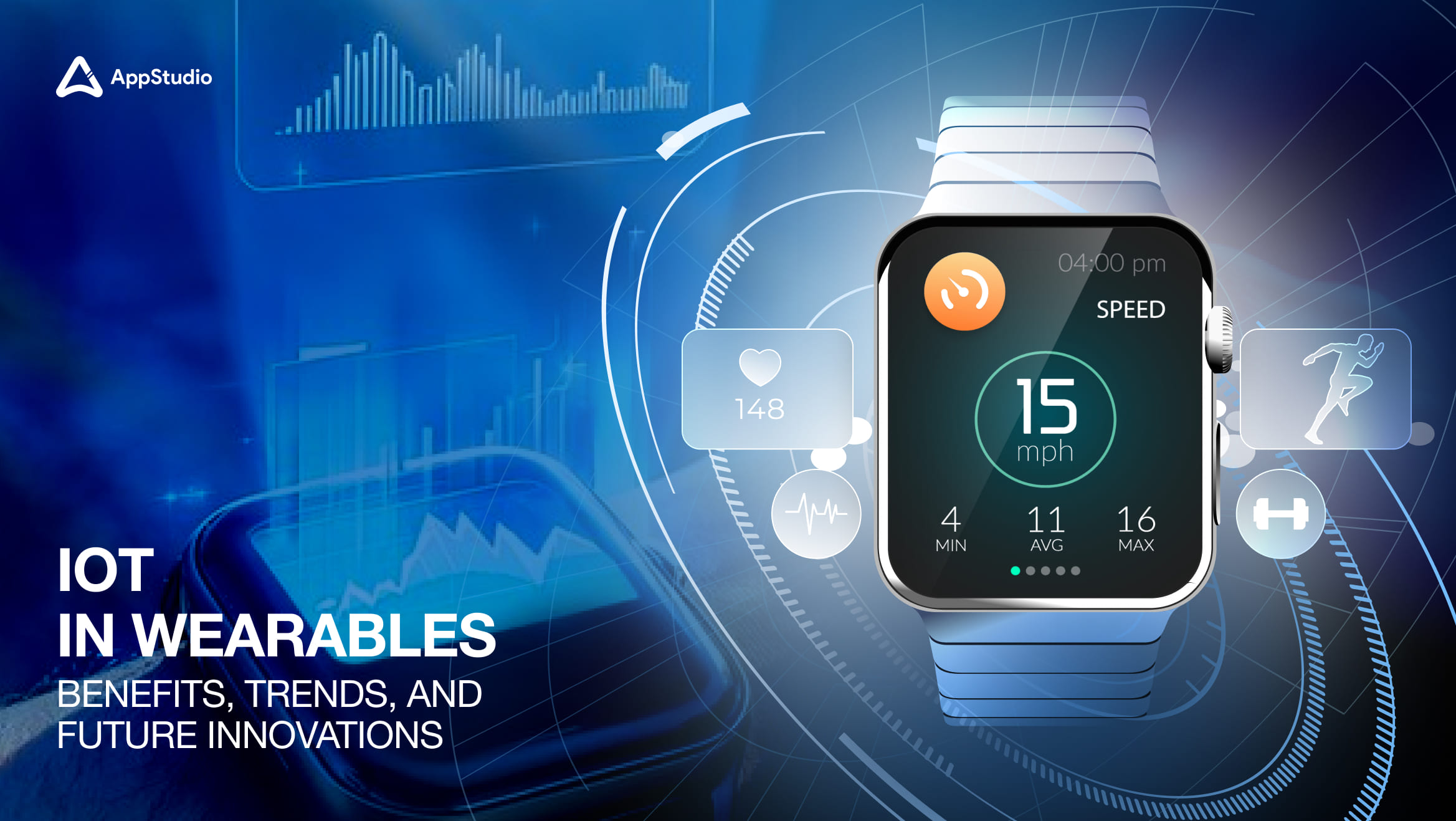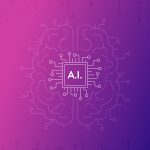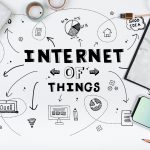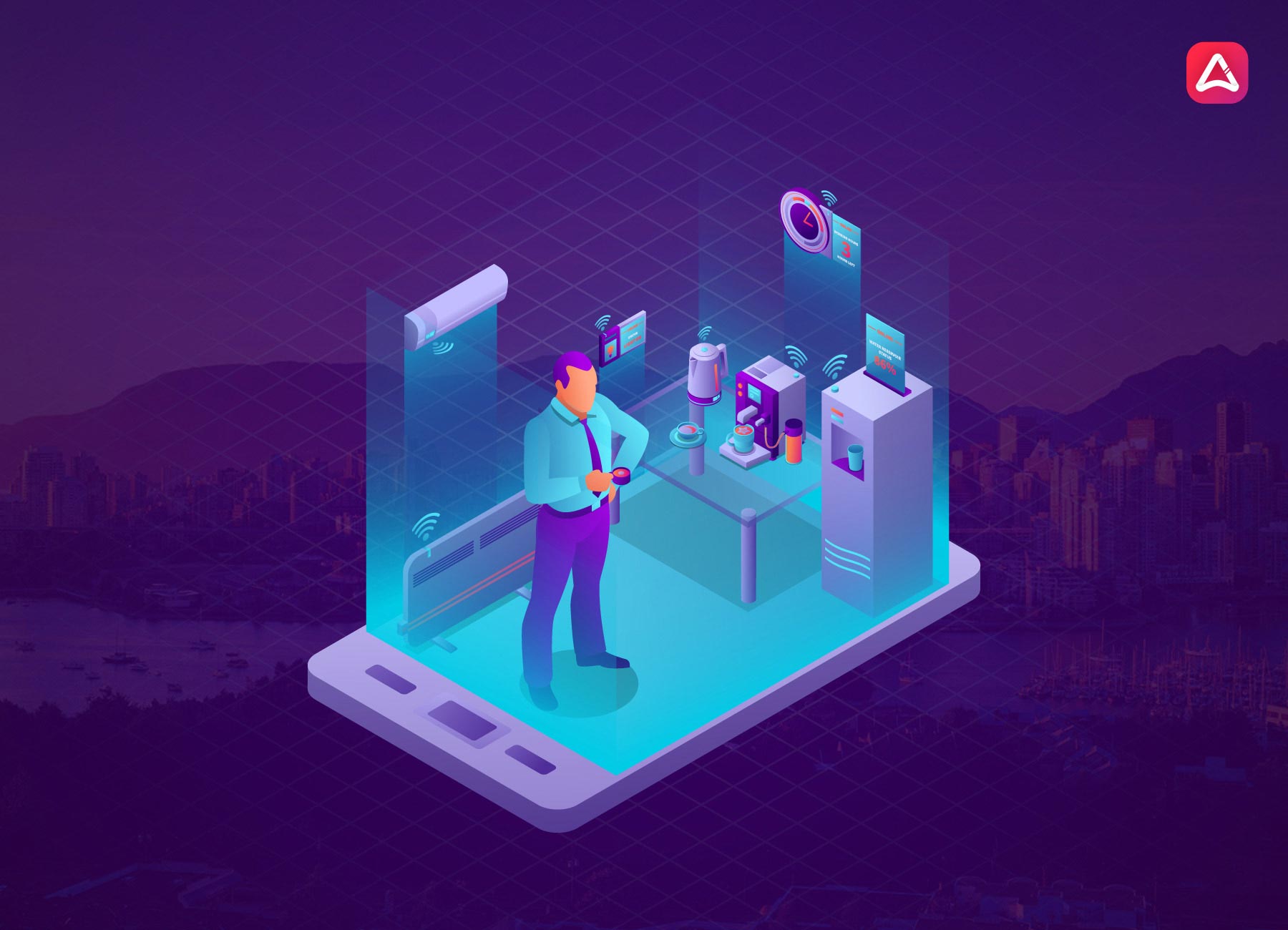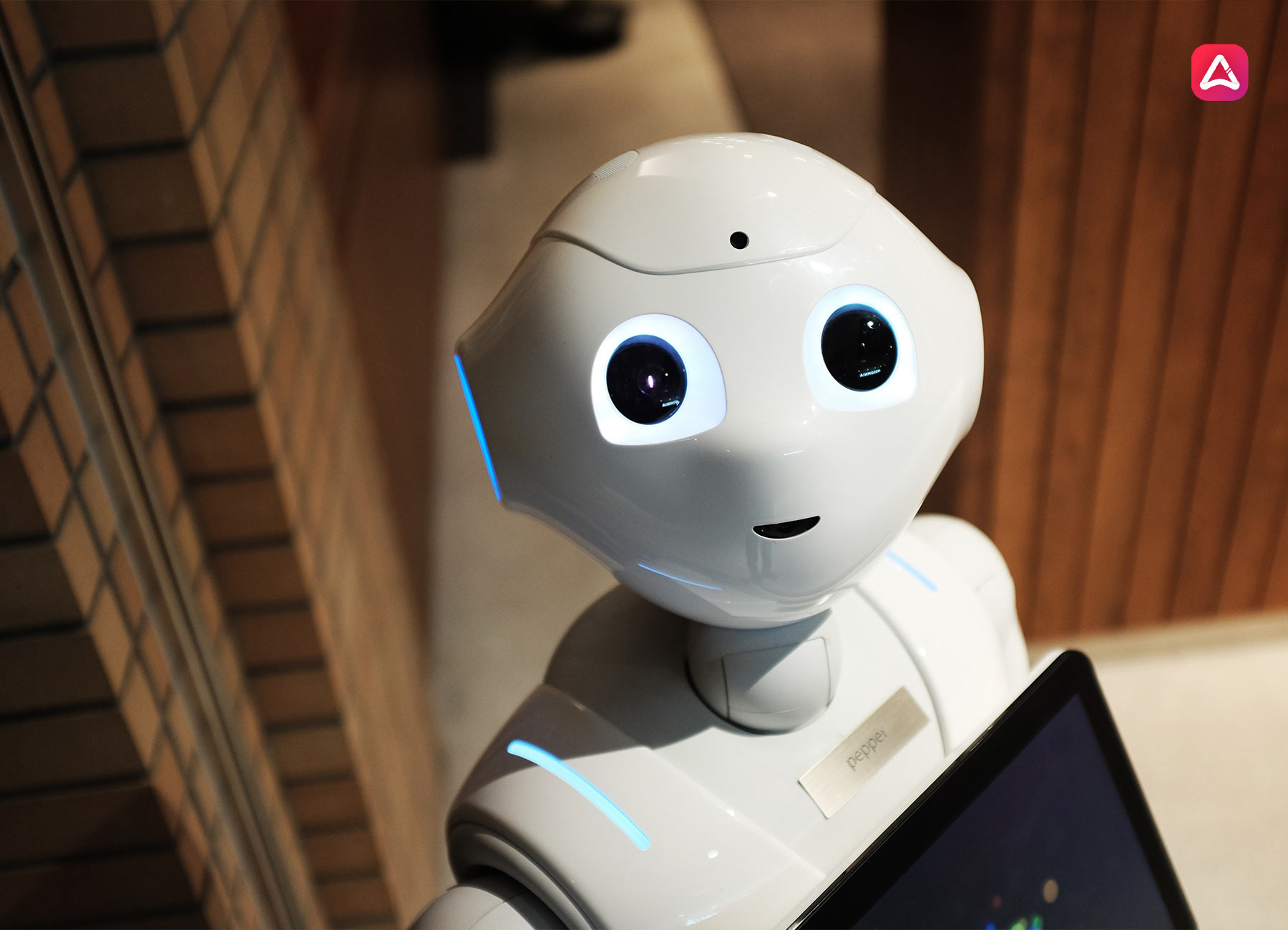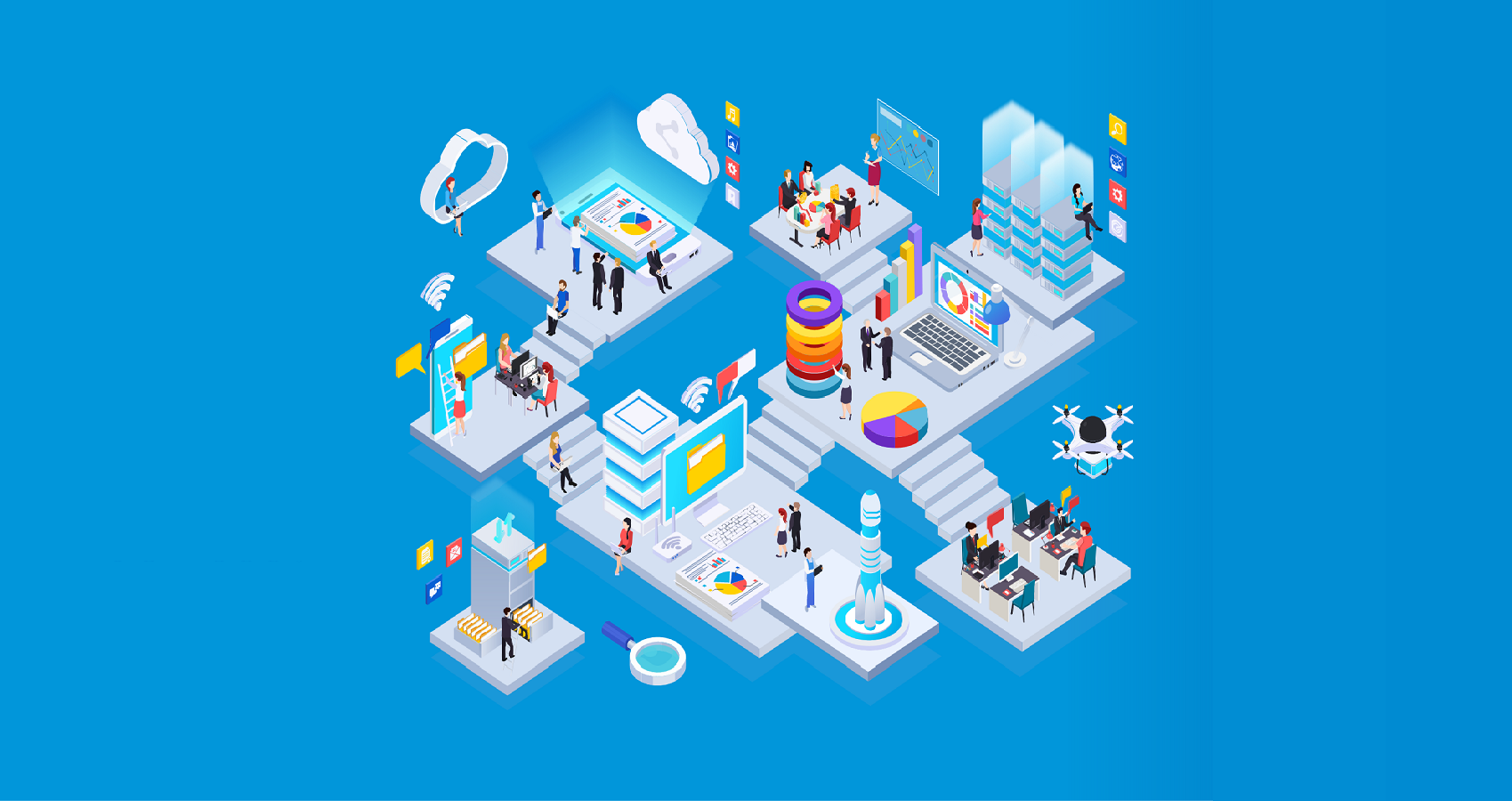Wearable technologies have reshaped healthcare, fitness, and daily interactions, offering innovative solutions to long-standing challenges. Powered by IoT, these wearable devices enable seamless communication, real-time monitoring, and unparalleled convenience. From smartwatches to augmented reality glasses, wearable IoT devices are indispensable in today’s connected world.
The adoption of wearable IoT is fueled by the global penetration of smartphones, creating endless opportunities for industries like healthcare and fitness. According to a report by Grand View Research, the global fitness app market is expected to grow at an impressive compound annual growth rate (CAGR) of 17.6% from 2023 to 2030.
This blog explores the benefits, applications, trends, and future potential of IoT in wearable technology, helping businesses understand how they can embrace this transformative movement.
Why Wearable Internet of Things Technology is a Game-Changer
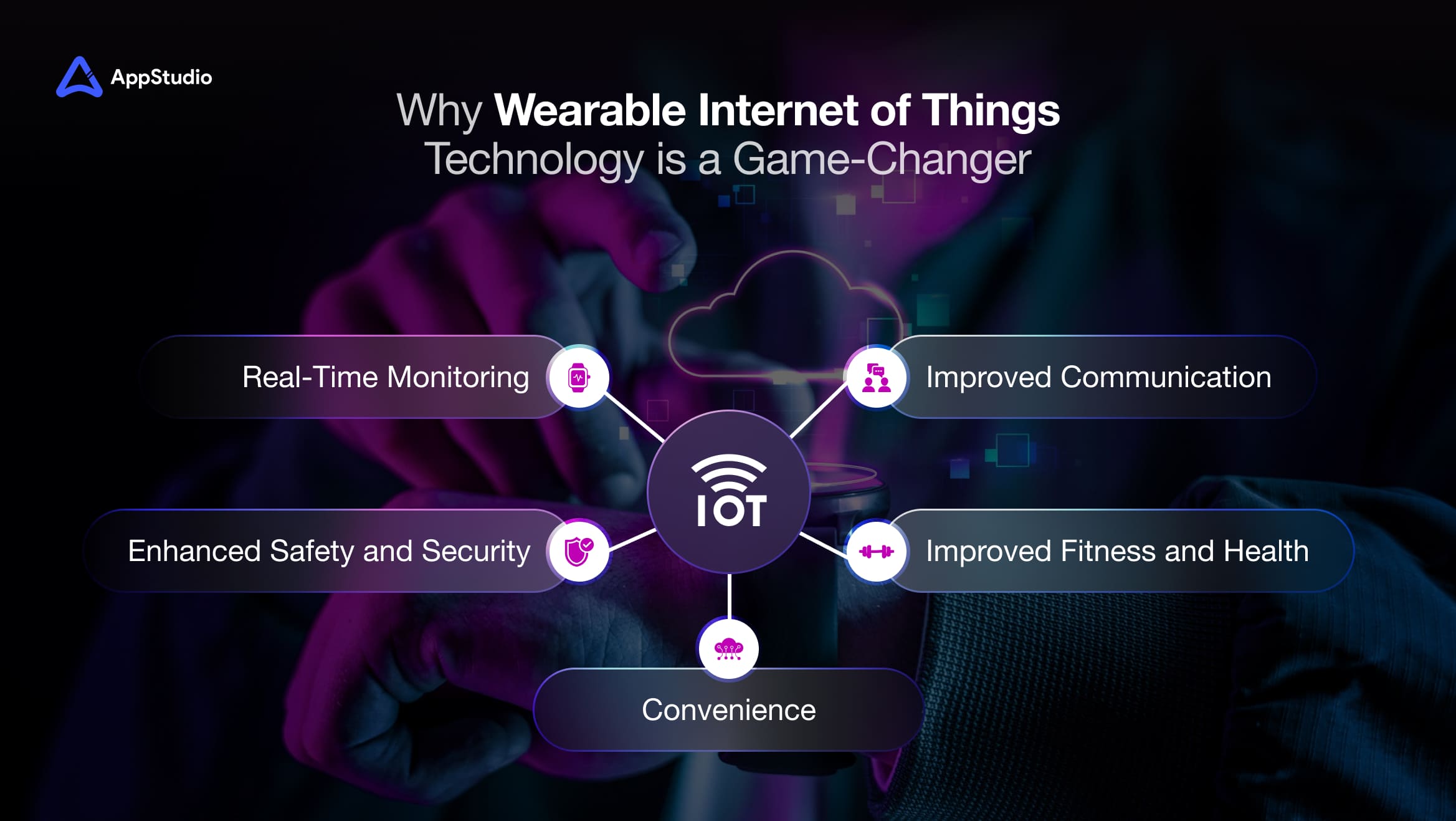
Convenience
Wearable Internet of Things devices offer a seamless way to integrate technology into daily life. Unlike smartphones, which need to be carried in pockets, or laptops, which aren’t always practical, wearables are accessible and portable. They let you stay connected, access information, and perform tasks on the go, making them a perfect fit for busy lifestyles. Whether checking notifications, setting reminders, or tracking fitness, these devices keep you informed and efficient without interrupting your day. Their hands-free functionality ensures you’re always prepared to tackle tasks, blending convenience with advanced technology to enhance productivity and connectivity.
Real-Time Monitoring
A standout feature of wearable devices is their ability to monitor various parameters in real-time. From tracking your heart rate, sleep, and physical activity to analyzing environmental conditions, wearables provide practical insights instantly. This real-time data helps users improve their well-being, optimize routines, and enhance business processes. For example, athletes can adjust their workouts based on immediate feedback, while companies can monitor employees’ safety in challenging environments. Collecting and analyzing data as it happens makes wearable technology indispensable for anyone looking to make informed decisions quickly and efficiently.
Related reading: IoT App Development: A Comprehensive Guide
Improved Fitness and Health
Wearable devices play a pivotal role in promoting fitness and health. They allow users to set goals, monitor progress, and achieve a healthier lifestyle. By tracking vitals like heart rate, steps, and calories burned, these devices provide insights to refine your fitness routine. Wearables also help detect potential health issues early, assist in managing medications, and improve sleep patterns. Whether you’re a fitness enthusiast or someone managing chronic conditions, wearables offer personalized health tracking and actionable data. They empower users to take control of their physical well-being with tools designed to support proactive, health-conscious living.
Enhanced Safety and Security
Wearable devices significantly enhance safety and security for individuals and businesses. GPS tracking, emergency alerts, and biometric authentication features provide peace of mind by ensuring personal safety. For example, GPS trackers can locate loved ones or alert authorities during emergencies. In the workplace, wearable devices protect employees in hazardous environments by monitoring conditions like heat, toxic gases, or worker fatigue. These features not only safeguard individuals but also help companies ensure compliance with safety regulations. Wearables are practical tools for enhancing personal security and creating safer work environments through real-time monitoring and proactive measures.
Improved Communication
Wearables like smartwatches, fitness bands, smart earbuds, and AR glasses revolutionize communication. These devices allow users to stay connected hands-free, reducing distractions from constant texting or phone calls. Features like voice commands, notifications, and instant messaging ensure seamless interaction with business partners, friends, or family. Wearables bridge gaps, enabling effective communication without interrupting workflows or daily routines. Whether you’re on a run, in a meeting, or commuting, wearables keep you connected effortlessly. They redefine communication by offering convenience, accessibility, and efficiency, ensuring you never miss out on important conversations or updates.
The Impact of IoT in Wearables for Health and Wellness
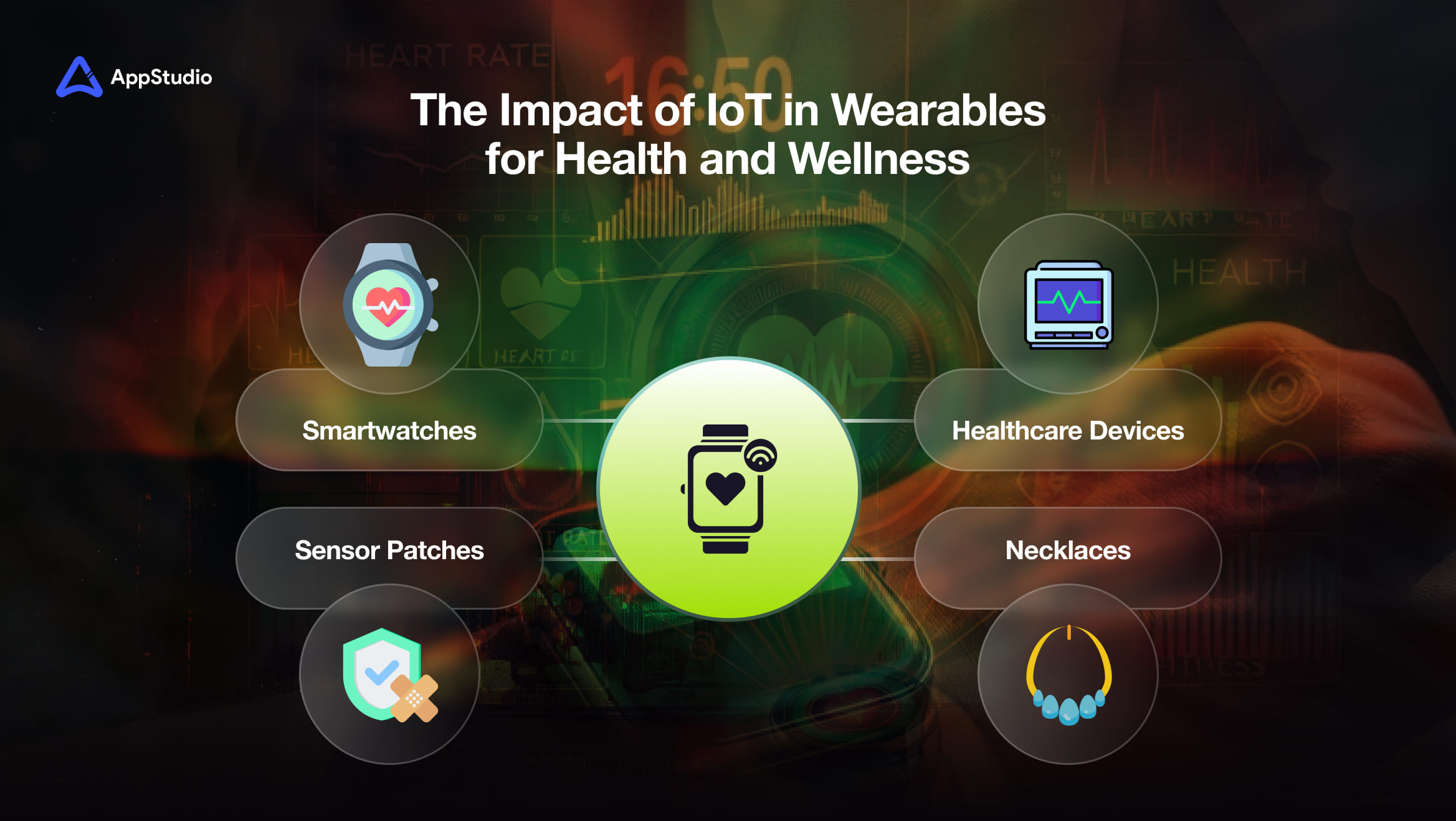
The IoT development has been integrated into healthcare wearables in various innovative ways. Devices such as smartwatches, handheld gadgets, necklaces, and even sensor patches are now serving as critical tools in disease prevention, treatment, and overall health monitoring. Below is an overview of how these wearables are making a difference.
Smartwatches
Smartwatches are among the most popular wearable devices, with many options now available. For instance, the Apple Watch, introduced in 2014, has sparked a wave of development with applications targeting healthcare. Other notable smartwatch manufacturers focusing on healthcare include Global Kinetics and Cygnus Inc.
The Apple Watch also offers a range of healthcare features, such as an app that helps monitor Parkinson’s disease symptoms and progression. The watch includes applications for managing Major Depressive Disorder (MDD) by evaluating symptoms and responses to treatment.
Healthcare Devices
Vitals360, created by VoCare, is a compact device smaller than a smartphone that tracks vital health signs such as temperature, blood pressure, pulse, oxygen levels, and heart rhythm. It is used by home healthcare professionals to send patient data to primary care doctors.
Related reading: Top 10 Best IoT Programming Languages
Necklaces
Some of the most recognized wearable alert systems are necklaces from companies like Life Alert and AlterOne, which feature pendants with buttons that wirelessly transmit emergency alerts to a remote location.
Sensor Patches
Owlet created a range of wearables, including a device that tracks infants’ heart rates, oxygen levels, and sleep patterns. They also offer a band for expectant mothers to monitor neonatal vital signs, including heart rate and kick counts.
These examples represent just a small fraction of the many healthcare wearables available today, all contributing to more personalized, efficient, and accessible health monitoring.
If you’re looking to develop IoT-enabled wearable technology, consider partnering with industry experts like Appstudio.
Trends in IoT-Driven Wearable Technology for 2025
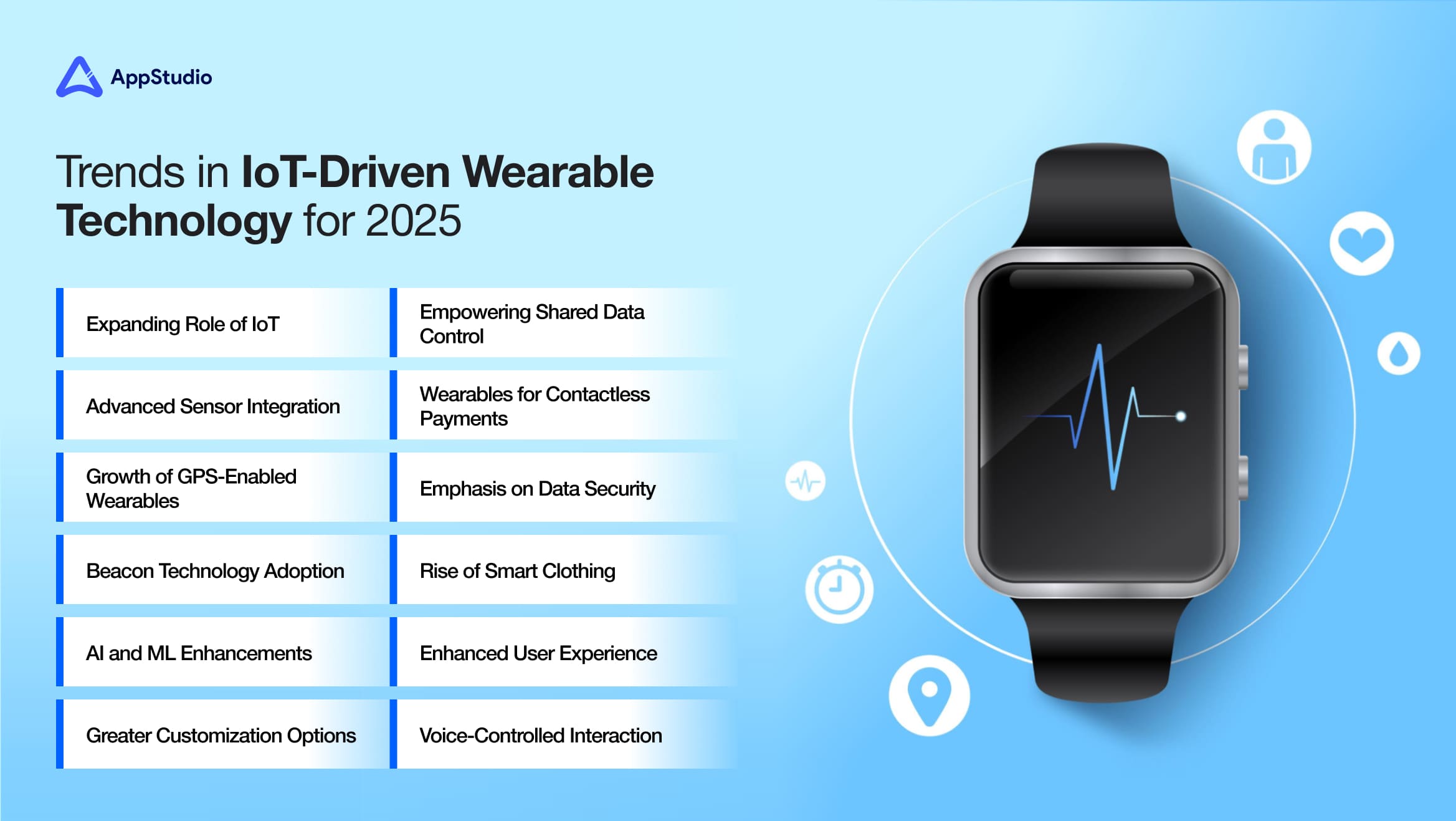
Trend 12: Expanding Role of IoT
IoT revolutionizes wearable apps by enabling connectivity between smartphones and smart home systems. This interconnectedness allows wearables to exchange data in real time, facilitating functionalities such as home automation, health tracking, and personalized alerts, making everyday tasks more efficient.
Trend 11: Advanced Sensor Integration
The adoption of sophisticated sensors is on the rise, allowing wearable apps to monitor physiological metrics such as heart rate, blood oxygen levels, and stress. These sensors enhance accuracy and introduce features like fall detection, promoting better health monitoring and safety.
Trend 10: Growth of GPS-Enabled Wearables
GPS-powered wearables are gaining traction, especially for activities like running and cycling. These devices precisely track physical activities and offer location-based safety features, making them a vital tool for fitness enthusiasts and outdoor adventurers.
Trend 9: Beacon Technology Adoption
Wearables integrated with beacon technology can interact with nearby devices and systems. This trend enables features such as personalized offers, event check-ins, and in-store navigation, paving the way for enhanced user experiences and business opportunities.
Trend 8: AI and ML Enhancements
AI and ML are becoming integral to wearable apps, enabling predictive analytics, behavior tracking, and health monitoring automation. These technologies help derive actionable insights, improving user engagement and overall app functionality.
Trend 7: Greater Customization Options
Personalization remains a key focus for wearable apps. Users will see enhanced customization features for settings, functionalities, and visual themes, ensuring wearables cater to individual preferences and lifestyle needs.
Related reading: How Much Does IoT App Development Costs
Trend 6: Empowering Shared Data Control
Shared data ownership is gaining momentum, giving users control over what information apps can share with third parties. Organizations are building models to enhance transparency and user trust by prioritizing privacy in wearable app development.
Trend 5: Wearables for Contactless Payments
The integration of NFC technology is driving the use of wearables for ePayments. Smartwatches and fitness trackers are set to simplify transactions, offering a secure and convenient way to make purchases and access services.
Trend 4: Emphasis on Data Security
As data breaches remain a concern, wearable apps are focusing on robust security measures. Developers are implementing advanced encryption and privacy features to protect sensitive user information, boosting trust and reliability.
Trend 3: Rise of Smart Clothing
Smart fabrics embedded with sensors are reshaping wearable technology. These garments track body movement, temperature, and hydration metrics, making them valuable for fitness, sports, and health monitoring applications.
Trend 2: Enhanced User Experience
Delivering an exceptional user experience is crucial for wearable apps. Developers are innovating to create intuitive designs and seamless navigation, ensuring usability and visual appeal despite size constraints.
Trend 1: Voice-Controlled Interaction
Voice control is transforming hands-free interaction in wearable apps. Features like voice-activated texting, calling, and reminders are streamlining functionality, enhancing convenience for users in their daily activities.
Potential Challenges and Key Considerations in IoT Wearables
1. Ensuring Data Security and Maintaining Privacy
The gathering and transmission of personal data via wearable technologies highlight significant privacy and security risks. Implementing stringent security protocols to safeguard this information is critical.
2. Standardization and Device Compatibility
Achieving smooth data exchange and system integration requires IoT devices to be compatible and adhere to standardized protocols. Standardization is crucial for effective connectivity.
3. Improving Battery Performance
Constant connectivity demands of IoT wearables can deplete battery resources quickly. Developers face ongoing challenges in improving battery longevity.
4. Addressing Ethical Concerns
The deployment of wearable technologies can introduce various ethical challenges, particularly related to how data is collected, used, and shared. Addressing these ethical issues is imperative for manufacturers and users alike.
5. Reliability of Data
Accuracy and reliability are crucial when it comes to the data collected by wearable devices, particularly in applications affecting health and fitness. Ensuring data integrity is fundamental.
Related reading: 10 Popular IoT Tools to Consider
The Future of IoT in Wearable Technology
The future of IoT in wearables is bright, with numerous innovative applications in development. Smaller, more efficient designs, the rollout of faster cellular networks, and advancements in AI and machine learning are expected to enhance the precision and functionality of wearables.
However, challenges persist. Developers must navigate issues such as limited display areas, constrained computing power, unconventional device shapes, and the complexity of managing sensor data and communication patterns. These hurdles require innovative solutions to unlock the potential of wearable IoT technology fully.
In conclusion, wearable IoT is transforming how we approach health and daily activities. As these technologies become more sophisticated, they open up opportunities for businesses to innovate and improve user experiences. If you’re exploring ways to incorporate wearable IoT into your business strategy, reach out to us to discuss your vision and how to bring it to life.
Frequently Asked Questions
IoT in wearable technology refers to the incorporation of Internet of Things capabilities in devices like smartwatches and fitness trackers. These devices collect, process, and transmit real-time data, connecting seamlessly with smartphones, cloud systems, and other devices. This interconnected ecosystem enables smarter, more personalized user experiences and insights.
IoT wearables have diverse applications, including tracking health metrics like heart rate and sleep patterns, navigation through GPS-enabled devices, hands-free communication, and facilitating contactless payments. These functionalities make them invaluable in personal, professional, and even industrial contexts.
Data security is vital for wearable IoT devices as they handle sensitive personal information such as health metrics, location, and financial data. Ensuring robust security measures builds user trust and prevents breaches, protecting both the individual and the organization using the devices.
IoT in wearables empowers businesses by optimizing operational workflows, enhancing workplace safety through monitoring systems, and collecting actionable insights from real-time data. This leads to improved efficiency, productivity, and informed decision-making across industries.
Appstudio offers cutting-edge IoT and wearable device development expertise, creating innovative, customized solutions to meet unique business requirements. Their tailored approach ensures scalable and efficient devices align with your goals and objectives.
Emerging trends like integrating artificial intelligence, using advanced biometric sensors, focusing on enhanced privacy measures, and expanding smart fabrics will redefine IoT wearable technology, making it more impactful and user-centric.
